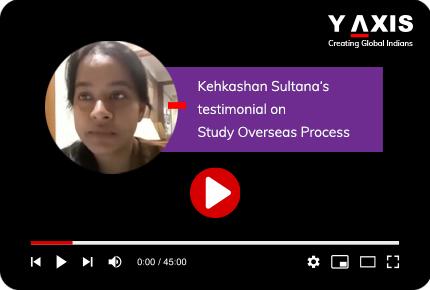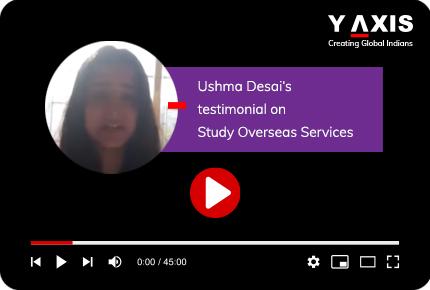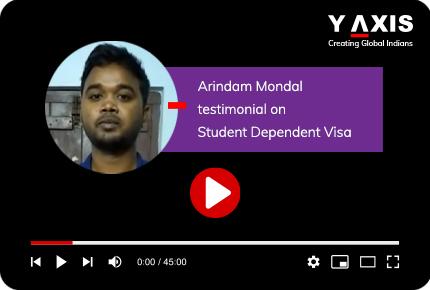- Points Based
- Most people below the age of 51 years old, with an occupation (listed on each country’s list), 2+ years of work experience & good English / French are eligible for this
- It is the most popular way of settling overseas
- Similar to skilled immigration
- Occupation must be listed on the state list
- Long term visa converted to PR & citizenship
- Very popular option for most countries
- Candidates who find a full time job & an employer overseas are eligible for this visa
- test
Y-Axis offers job search services to help candidates market themselves to overseas employers. We have a high success rate & have been very successful with this. For more information, please click here.
- Some countries offer permanent residency anyone who has a parent, brother, sister, uncle, aunt or first cousin overseas
- The sponsoring relative needs to be an citizen or a permanent resident of that country
- test
- Many countries offer a temporary or PR visa in exchange for an investment
- Investment amounts can range from $50,000 to $500,000 or more



study japanese in japan
study japanese
Explore top Japanese language schools in Japan 2025. Learn about fees, visa requirements, and pathways to study and work in Japan.
Why Study Japanese in Japan
Learning Japanese in Japan gives you full immersion—daily practice in classrooms, on the street, and at part-time jobs—so you progress faster and retain more. Modern language schools use communicative, career-focused curriculum with JLPT preparation, business Japanese, and cultural modules. For Indian students, Japan offers safe cities, predictable costs, strong attendance-to-visa policies, and clear pathways into higher education and work.
Key Benefits
- Intensive JLPT-focused study (N5 → N1) with native teachers
- Faster progress through real-life immersion and practice
- Work part-time (up to 28 hours/week) after permission
- Clear pathways to diploma/degree admission after language study
- National Health Insurance (NHI) access and student discounts
Program Types (Choose What Fits Your Goal)
- Intensive Language School (General Japanese): 20–25 class hours/week; speaking, grammar, kanji, culture.
- JLPT Preparation Tracks: Targeted courses for N5–N1 with mock tests and strategy.
- University/College Prep Japanese: Academic reading, essays, research skills for degree entry.
- Business Japanese & Keigo: Email etiquette, meetings, interviews, and workplace language.
- Short-Term Courses (1–3 months): Summer/winter programs with cultural activities.
- Custom/Evening Modules: For residents or upgrade from N3 → N2/N1.
Course Levels, Duration & Outcomes
| JLPT Level | Typical Duration (full-time) | What You Can Do |
|---|---|---|
| N5 | 8–12 weeks | Basic phrases, daily life Japanese |
| N4 | 12–16 weeks | Routine conversation, simple reading |
| N3 | 4–6 months | Everyday fluency; entry-level service jobs |
| N2 | 6–12 months | Professional communication; most office roles |
| N1 | 9–15 months | Advanced literacy; specialized/business roles |
Many schools place you via an online/onsite test; fast-track options exist for prior learners.
Eligibility Criteria (Student Visa Track)
- Age: 18+
- Education: 12th pass or higher (degree/diploma advantageous)
- Language: No Japanese required for beginner intake; prior learners should submit any certificates (optional)
- Documents: Passport, photos, education transcripts/certificates, statement of purpose, financial proofs, CV (if applicable)
- Financials: Proof of funds typically equivalent to 1 year of tuition + living costs
How to Get Admission
- Step 1: Choose City & Course Length
Select from 3, 6, 12, 18, or 24 months in Tokyo/Osaka/Fukuoka/Sapporo/Nagoya. - Step 2: School Application & Placement
Submit form, passport, education history, and financial sponsor details. - Step 3: Pay Application/Admission Fee
As per school policy. - Step 4: Certificate of Eligibility (COE) Processing
Handled by the school with immigration. - Step 5: Visa Application
Apply at VFS/Embassy using COE and required documents. - Step 6: Fee Payment & Accommodation Booking
Pay entrance + first semester fees and book accommodation. - Step 7: Arrival & Registration
Obtain resident card, complete city registration, enroll in NHI, and set up bank/SIM. - Step 8: Part-Time Work Permission
Apply after arrival; up to 28 hours/week.
Intakes & Deadlines
| Intake | Application Window | Notes |
|---|---|---|
| April (Main) | Oct – Jan | Largest intake; ideal for year-long plans |
| July | Jan – Apr | Good for N3→N2 fast-track |
| October | Apr – Jul | Balanced class sizes; strong JLPT focus |
| January | Aug – Oct | Compact winter cohorts; good for short-term |
Apply 6–9 months in advance for COE timelines and visa slots.
Tuition Fees (Indicative)
| Course Length | Tuition (JPY) | Approx. INR |
|---|---|---|
| 3 months | ¥180,000–¥240,000 | ₹1.0–₹1.3 lakh |
| 6 months | ¥350,000–¥450,000 | ₹1.9–₹2.5 lakh |
| 12 months | ¥650,000–¥800,000 | ₹3.6–₹4.4 lakh |
| 18–24 months | Pro-rated | Pro-rated |
Payment Notes:
- Entrance fee + first installment due before visa issuance
- Semester/term-wise plans common; some schools offer monthly plans
Living Costs & Sample Budget (per month)
| Item | Tokyo Area | Other Cities |
|---|---|---|
| Accommodation | ¥45,000–¥80,000 | ¥30,000–¥65,000 |
| Food | ¥25,000–¥35,000 | ¥20,000–¥30,000 |
| Transport | ¥5,000–¥8,000 | ¥4,000–¥6,000 |
| Utilities/Phone | ¥7,000–¥10,000 | ¥6,000–¥9,000 |
| Miscellaneous | ¥8,000–¥12,000 | ¥6,000–¥10,000 |
Annual estimate: ¥900,000–¥1,300,000 depending on city and lifestyle.
Accommodation Options
- School Dorms / Shared Houses: Budget-friendly, furnished, utilities often included.
- Student Apartments: Private rooms with kitchenette; longer contracts.
- Homestays (select cities): Immersion + meals; limited availability.
Student Visa Overview (Language Studies)
- Validity: 6 months to 2 years (renewable within caps)
- Work Rights: Up to 28 hours/week during term; up to 40 hours/week in vacations (with permission)
- Attendance Rule: Typically ≥80% to stay compliant
- COE Required: Issued by school, then apply for visa in India
- Healthcare: Mandatory NHI enrollment; ~70% medical cost coverage
Part-Time Work: Roles & Pay
- Common Jobs: Convenience stores, cafés, kitchens, housekeeping, logistics, hotel support, language/IT support for N3+
- Typical Pay: ¥1,000–¥1,200 per hour (higher in metro/late shifts)
- Tip: Reaching N3 quickly expands job options; N2/N1 opens office roles.
Pathways After Language Study
- Vocational Colleges (Diploma/Advanced Diploma): Use N2/N3 to enter Senmon Gakkō.
- University (Bachelor’s/Master’s): Academic Japanese + EJU/entrance processes as required.
- Employment: Language study alone doesn’t grant a work visa; you’ll need an eligible employer/role and the correct residence status (e.g., Engineer/Humanities/International Services). Strong outcomes typically require N2/N1 plus a diploma/degree.
Scholarships & Discounts (Indicative)
- Attendance/merit discounts by schools
- Local government/private grants (competitive)
- Short-term awards for high performers
Many schools also offer recommendation-based tuition reductions for consistent attendance and top grades.
How Y-Axis Can Help?
- Personalized school and city selection (budget, pace, career goal)
- End-to-end application, COE, and visa documentation
- Accommodation booking and arrival assistance
- Part-time job readiness (résumé format, interview prep)
- Pathway planning to diploma/degree and work visas after language study

